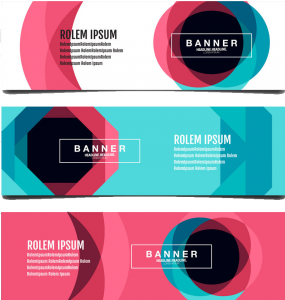In today’s noisy, fast-paced digital world, cutting through the clutter and getting your brand in front of the right people requires more than just running ads on one channel and hoping for the best. Consumers are everywhere scrolling on social media, watching TV, streaming content on demand, checking emails, or browsing on multiple devices at once. That’s exactly why a well-executed cross-platform ad campaign has become not just a smart move, but a necessary strategy for brands that want to stay ahead.
A cross-platform ad campaign doesn’t just mean placing the same ad on TV and Facebook. It means creating a unified, strategic experience across multiple touchpoints—TV, digital, video-on-demand, mobile, desktop, streaming services, and even exclusive sponsorships on niche networks—while keeping your messaging consistent and compelling.
It’s about meeting your audience wherever they are, tailoring your message to fit each platform’s vibe, and ensuring all of it works together to move your audience along the buyer journey. When done right, this approach doesn’t just increase visibility—it boosts engagement, improves brand recall, and drives conversions more effectively than siloed campaigns.
To help you get the most out of your efforts, stay competitive, and avoid wasted ad spend, you need a solid plan. The roadmap ahead will walk you through the essential steps for planning, building, and launching a high-impact cross-platform ad campaign that delivers measurable results and maximizes your marketing ROI. Let’s dive in.
Table of Contents
ToggleWhy Cross-Platform Campaigns Are a Must in Modern Marketing

Today’s consumers are everywhere. They’re browsing Facebook on their phones, watching YouTube on their TVs, scrolling through Instagram on tablets, and jumping into Twitter threads on laptops. That’s why limiting your strategy to just one platform is like showing up to a party with only one song—it just won’t cut it.
A cross-platform ad campaign gives your brand the power to meet your audience where they are, with content that actually fits the platform they’re using. Different platforms favor different formats—Instagram thrives on stunning visuals, YouTube is all about engaging videos, and Twitter limits you to 280 characters of punchy messaging. Trying to copy-paste one format across all platforms? That’s a recipe for being ignored.
By tailoring content to match each platform’s strengths, a well-structured cross-platform ad campaign not only enhances the customer experience but also boosts your brand’s credibility. It shows you get the nuances of each space, and more importantly, that you respect your audience’s time and preferences.
The result? Better engagement. Stronger conversion rates. And let’s not forget—the more places your audience sees your message, the more they remember you. Increased visibility leads to higher brand recall, which eventually builds trust and drives action.
Bottom line: If you want to stay relevant, connected, and competitive in today’s multi-device, multi-platform world, going cross-platform isn’t optional—it’s essential.
Great Examples of Cross-Platform Ad Campaigns That Nailed It

If you’re still wondering whether a cross-platform ad campaign is worth the effort, these real-world success stories should clear that up fast. When brands go beyond just one channel and craft cohesive, multi-platform experiences, the payoff can be massive. Let’s break down a few examples of brands that absolutely crushed it with smart, strategic cross-platform execution.
#1. Mercedes-Benz: A Luxury Launch That Went the Distance
Back in 2013, Mercedes-Benz pulled off what turned out to be their most successful advertising campaign in over two decades—all thanks to a tightly woven cross-platform ad campaign for the launch of their CLA model.
Here’s how they did it:
They kicked things off with insights from their digital community, “Generation Benz,” targeting millennials and young professionals between their 20s and 40s.
The campaign’s centerpiece? A Super Bowl TV ad starring Kate Upton, Willem Dafoe, and Usher—right on-brand for high-impact exposure.
They created a dedicated microsite for the CLA and amplified it across social media, including paid Facebook ads and the trendy hashtag campaign #clatakethewheel.
They also brought in influencer marketing muscle, partnering with millennial creator Casey Neistat to drive buzz among younger audiences.
The result? A jaw-dropping 82% jump in luxury car buyers switching over to purchase the CLA. That’s the kind of impact only a well-structured, cross-platform ad strategy can deliver.
#2. Guinness: Turning Lockdown Nostalgia into Viral Engagement

Fast forward to 2021, and Guinness turned a post-lockdown moment into an engagement goldmine. Their cross-platform ad campaign tapped into the emotional void people felt from missing pubs during the pandemic.
Here’s how they brewed up something memorable:
They released a clever TV spot featuring quirky visuals like a white cat on a black bin and a foamy washing machine—subtle nods to the iconic look of a pint of Guinness.
Then, they launched a social media challenge under the hashtag #LooksLikeGuinness, asking fans to share objects or scenes that reminded them of the beer.
The outcome? When pubs finally reopened in May 2021, Guinness saw a 350% increase in engagement—a level of traction that dwarfed their usual benchmarks.
#3. Amazon: A Fantasy Show Launch Done Right
Amazon proved they weren’t playing small when they rolled out their cross-platform ad campaign for the fantasy series The Wheel of Time in 2021.
Here’s the magic they conjured:
They took over Piccadilly Square in London with a jaw-dropping 3D billboard that literally stopped traffic.
Knowing the strength of the fanbase, Amazon leaned into fandom culture by launching after-show livestreams with micro-influencers and book enthusiasts.
The campaign stretched across multiple touchpoints—social media, in-app promotions, retargeting ads, and more.
The payoff? Over 1.16 billion streams within the first three days of the show’s release. That’s next-level reach made possible by smart, integrated platform strategies.
How To Successfully Launch Cross-Platform Ad Campaign?

#1. Know Who You’re Talking To
If you’re serious about running a high-performing cross-platform ad campaign, it all starts with one thing—understanding your audience. You can’t market to people you don’t fully know. That’s why doing your homework is absolutely non-negotiable.
First things first, dig deep with market research. You need to know more than just the basics like age, gender, and location. Get into the psychographics—what do they believe in? What are their day-to-day habits? What do they binge on Netflix, scroll past on TikTok, or stream while making dinner?
Think of it this way: a 30-year-old professional in Lagos who watches business podcasts isn’t the same as a 30-year-old gamer in Abuja glued to Twitch and Discord. Even if they share a few demographics, their behaviors, interests, and how they interact with content are worlds apart.
To nail your cross-platform ad campaign, break your audience into specific segments. Don’t try to create a one-size-fits-all ad. Tailor your content for each group and choose the platforms where those people are actually hanging out—be it Instagram, YouTube, or streaming services.
And don’t forget your competition. See what they’re doing, where they’re showing up, and most importantly, what they’re missing. Those gaps? That’s your opportunity to stand out.
Finally, remember: your audience is constantly evolving, and so should your strategy. Keep collecting data. Keep refining your personas. The more you understand your audience, the better your cross-platform ad campaign will connect, convert, and crush the noise.
#2. Define Your Goals
Before you go live with your cross-platform ad campaign, you need to know exactly what you’re aiming for. And no, vague goals like “boost brand visibility” or “get more traffic” don’t cut it. If you can’t measure it, you can’t manage it.
Start by setting specific, realistic, and measurable objectives. Think more along the lines of:
👉 “Increase online product sales by 20% in Q4”
👉 “Drive 5,000 new app downloads in 30 days”
👉 “Improve video ad completion rates by 15% across YouTube and connected TV”
See the difference? These aren’t just ambitions—they’re targets you can track, optimize for, and actually hit.
Your cross-platform ad campaign needs to work hand-in-hand with your broader business goals. Are you launching a new product? Trying to move old inventory? Building awareness in a new market? Let your campaign goals reflect that. And don’t forget to attach a timeline—deadlines drive urgency and focus.
Setting realistic goals also keeps your team grounded. Shooting for the stars with no rocket fuel (aka budget, tools, or resources) only leads to burnout and disappointment. Keep it ambitious but achievable.
Once your goals are clear, they become the compass for your entire campaign—guiding your creative choices, platform selection, targeting, budget allocation, and success metrics. Simply put, if you don’t define where you’re headed, your cross-platform efforts will be all motion and no progress.
So, before you roll out that next cross-platform ad campaign, stop and ask: what does success actually look like?
#3. Partner with a Cross-Platform Professional
Navigating the maze of TV, streaming, VOD, digital, and everything in between isn’t exactly a walk in the park. If you want to get serious results from your cross-platform ad campaign, teaming up with an expert, that can be the smartest move you make.
Why? Because the cross-platform ad campaign space is complex. Every channel has its own language, audience behavior, tech requirements, and targeting quirks. A seasoned partner already knows the ropes. They’ve built relationships with top-tier networks and platforms, giving you access to premium inventory you’d struggle to land on your own.
Working with a pro means you’re not just throwing your ad budget around hoping for the best. These experts bring advanced tools and strategies to the table—like hyper-targeted audience segmentation, real-time performance tracking, and data-driven optimization. Instead of running blind, you’ll be making sharp decisions based on what’s actually working.
Another perk? Cross-platform advertising experts know how to stitch your campaign seamlessly across every screen—whether that’s a 55-inch Smart TV in someone’s living room or a smartphone during a morning commute. They help keep your messaging consistent, your targeting precise, and your ROI climbing.
Partnering with a pro isn’t about outsourcing the hard work—it’s about amplifying your efforts and eliminating the guesswork. They’ll help you scale smarter, launch faster, and reach the right people at the right time, on the right screen.
Bottom line? If you’re aiming for a high-performing cross-platform ad campaign, don’t go it alone. Collaborate with experts who know how to make every impression count.
#4. Plan Your Media Mix Like a Professional
If you’re aiming for a results-driven cross-platform ad campaign, your media mix can’t be an afterthought—it needs to be strategic, balanced, and laser-focused. Think of it as assembling your dream team of platforms to meet your audience wherever they are—TV, mobile, desktop, streaming, you name it.
Whether you’re targeting couch surfers binging their favorite show or commuters scrolling through social feeds, your message will show up loud and clear—right where it counts.
Here’s the key: know your audience’s media habits. Are they tuning in to live sports on TV? Watching YouTube on their phones? Streaming Netflix on the weekends? Understanding how and where they consume content allows you to allocate your budget wisely.
For massive reach and brand awareness, traditional TV might still be your heavyweight champ. But when you need precise targeting and real-time engagement, digital channels like streaming platforms, OTT, and social media can be game-changers.
The magic happens when you balance both—using TV to build familiarity and digital to drive clicks and conversions. This synergy boosts your visibility and gives your campaign multiple touchpoints to engage your audience more effectively.
A well-planned media mix ensures your cross-platform ad campaign isn’t just seen—it’s remembered, clicked, and acted upon. So don’t just show up. Show up smart.
#5. Leverage Advanced Targeting to Hit the Bullseye
If you want your cross-platform ad campaign to stand out and truly deliver, you can’t afford to rely on guesswork. This is where advanced targeting becomes your not-so-secret weapon. With tools like attribution and targeting solutions, you can pinpoint your ideal audience down to the tiniest detail—think device type, location, viewing habits, interests, and even when they’re most likely to engage.
Instead of casting a wide (and expensive) net, you’ll be placing your ads directly in front of the people who are most likely to convert. It’s not just about getting views—it’s about getting meaningful ones.
A smart cross-platform ad campaign thrives on data. By tracking user interactions across TV, streaming, mobile, and web, you’re able to see exactly what’s working, what’s falling flat, and where your budget is delivering the most impact. You can adjust creative, shift budgets, and fine-tune placements in real time based on performance—no more waiting until the campaign is over to realize what could’ve been done better.
Even better? Advanced targeting lets you personalize your messaging for different audience segments. So instead of blasting the same generic ad to everyone, you’re speaking directly to each group’s preferences and behaviors. That kind of relevance can skyrocket engagement and conversion rates.
Bottom line: advanced targeting doesn’t just make your cross-platform ad campaign smarter—it makes it stronger, faster, and far more effective.
#6. Monitor and Optimize for Maximum Impact
Launching your cross-platform ad campaign is just the beginning—what comes next is where the real magic happens. Monitoring and optimization are the lifelines of any high-performing campaign, and if you’re not consistently keeping an eye on performance, you’re leaving results (and revenue) on the table.
Once your campaign goes live, don’t set it and forget it. Dive into your data dashboard regularly and track essential metrics like click-through rate (CTR), conversion rate, cost-per-acquisition (CPA), and return on investment (ROI). These numbers tell the story of what’s working—and what’s not.
A strong cross-platform ad campaign should be flexible. If you notice that your ads are killing it on streaming platforms but barely making a dent on social, it’s time to reallocate your budget and energy to where it counts. Maybe one creative is outperforming others? Scale that. Maybe one audience segment isn’t engaging at all? Refine your targeting or adjust the message.
Optimization isn’t just about fixing problems—it’s about enhancing what’s already performing well. Even a great campaign can become greater with a few smart tweaks. Run A/B tests, refresh ad creatives, adjust your bidding strategies, and update your segmentation based on real-time results.
In short, keep your finger on the pulse. A constantly monitored and optimized cross-platform ad campaign doesn’t just meet goals—it surpasses them.
#7. Measure Your ROI Like a Professional
When it comes to running a cross-platform ad campaign, it’s not just about flashy creatives or reaching massive audiences—it’s about results. And that’s where measuring your return on investment (ROI) becomes absolutely critical.
To know if your cross-platform ad campaign is truly paying off, you need to take a hard look at the numbers. Start by comparing the revenue your campaign generated against what you actually spent. But don’t stop there—go beyond just dollars and cents.
Ask yourself:
Did brand awareness go up?
Are more people visiting your website?
Did social engagement spike during the campaign?
Are you seeing better customer sentiment in comments or reviews?
These non-financial metrics matter just as much—sometimes even more. They reflect how well your campaign resonated with real people, which is key to building long-term loyalty and recognition.
Use tracking tools to follow every touchpoint—across TV, streaming, mobile apps, and social—to piece together the full picture. This holistic view helps you identify which platforms or strategies brought the best bang for your buck, and which ones need a rethink.
At the end of the day, measuring ROI isn’t just about proving the value of your cross-platform ad campaign—it’s about learning from it, refining your strategy, and scaling what works.
Conclusion
Picture this: it’s 7 AM, someone’s scrolling through Instagram while sipping coffee. By 9, they’re listening to a podcast on the commute. At noon, they’re catching up on news via their favorite app, and by evening, they’re streaming a show while casually browsing on a second screen. That’s today’s consumer—constantly shifting across platforms, devices, and content.
Now ask yourself: is your brand keeping up?
In this always-on, multi-screen world, relying on just one channel to get your message across is no longer enough. That’s where a well-planned cross-platform ad campaign comes in—one that meets your audience wherever they are, in whatever format they prefer, without breaking the flow of their day.
This guide walks you through how to build and execute a cross-platform ad campaign that not only reaches more people but resonates more deeply because in advertising today, relevance is everything.








